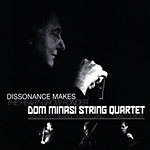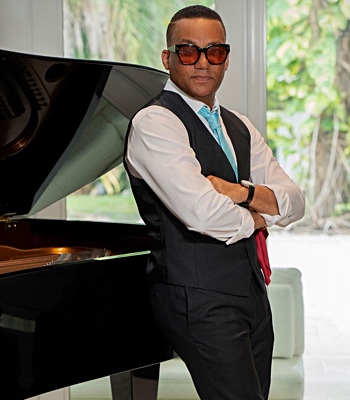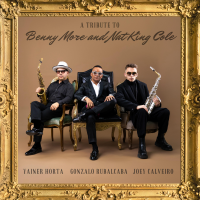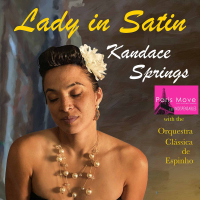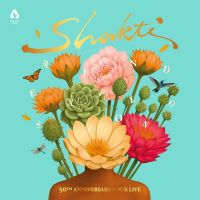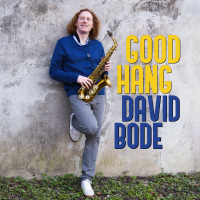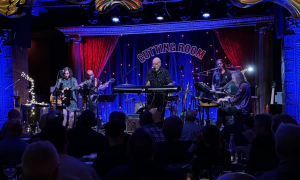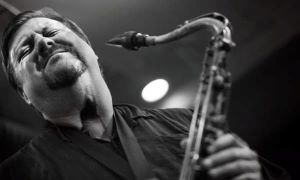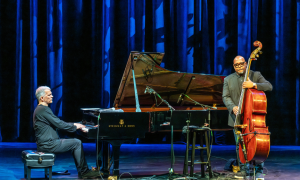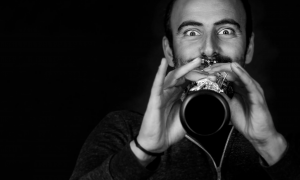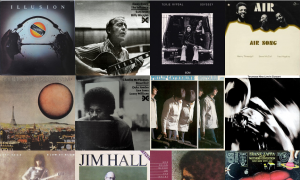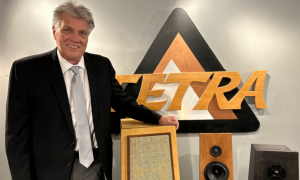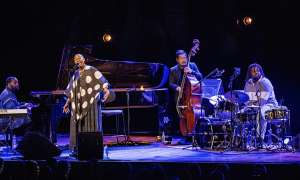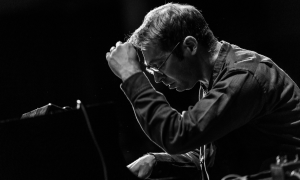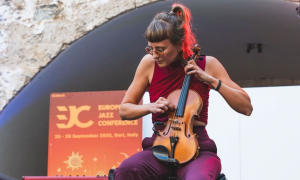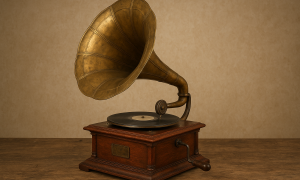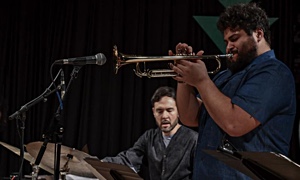Home » Jazz Articles » Live Review » Tampere Jazz Happening 2010: Days 3-4, November 6-7, 2010
Tampere Jazz Happening 2010: Days 3-4, November 6-7, 2010

Tampere Jazz Happening
Tampere, Finland
November 4-7, 2010
While most festivals aim to keep the energy, commitment and creativity levels high, few succeed at starting with a high bar and raising it continuously throughout the course of the event. While the first two days of Tampere Jazz Happening 2010 were strong, the final two days continued an upwards curve that culminated in two of its most memorable performances. Still, there were other high points, including a performance by Finnish saxophone legend Juhani Aaltonen, with an all-star band including the remarkable pianist/harpist Iro Haarla and bassist Ulf Krokfors, and a younger group, Plop, featuring two of the country's most exciting younger players: reed man Mikko Innanen and drummer Joonas Riipa.
Despite its relatively small size, Tampere Jazz Happening has grown into one of Europe's most significant festivals in the promotion of forward-thinking jazz. With its decided emphasis on some of Finland's most creative artists and ensembles, it also creates a strong case for there being a distinctive Finnish identity—though, as is often the case, it's harder to define exactly what that identity is; instead, it's something felt, something that's simply known when it's heard. Some of the diverse elements range from a sense of the absurd that approaches the Dutch scene, and a melding of classical and folk traditions. And more than some, Finland may be a small Northern European country, but its ties to the American tradition are strong. While it's not predominant, elements of swing are often either heard explicitly or simmer just beneath the surface. Even the blues has its place in some of the music, albeit of a more abstract, ambiguous nature. And when it comes to free music, especially in the realm of "changes, no time," few other than the Norwegians do it as well as the Finns.
Chapter Index
- Day 3: Juhani Aaltonen Quartet
- Day 3: K-18
- Day 3: Plop
- Day 3: Kolhoz
- Day 4: Mikkonen/Ounaskari/Jørgensen
- Day 4: Sound & Fury
- Wrap-Up
Day 3: Juhani Aaltonen Quartet
Released in 2009, Conclusions (TUM) introduced Finnish saxophonist Juhani Aaltonen's latest quartet, where in three out of four cases there was a connection through the music of the late drummer/composer Edward Vesala, though not necessarily at the same time: Aaltonen, collaborated a great deal with Vesala, but is best-known internationally for his work on two of the drummer's ECM classics: Nan Madol (1976) and Satu (1977); Haarla, an uncredited compositional collaborator with Vesala, played on albums beginning with Lumi (1987), through to Vesala's death in 1999; Krokfors, a founding member of another ECM band, Krakatau, with guitarist Raoul Bjorkenheim, played for a time in Vesala's band, and can be heard on Lumi.
 From left: Iro Haarla, Ulf Krokfors, Juhani Aaltonen, Reiska Laine
From left: Iro Haarla, Ulf Krokfors, Juhani Aaltonen, Reiska LaineAll three players worked seamlessly within the parameters of Vesala's music, though its markers—fluid time, compositions as rooted in contemporary classicism as they are a modern jazz vernacular, and an approach to free improvisation weighing heavily on nuance, economy and lyricism rather than technical pyrotechnics—are equally strong components of their work as well. Was Vesala the influence, or was it the other way around? The answer, most likely, is: yes, and yes.
For Aaltonen's afternoon performance in the larger Pakkahuone venue, which seats approximately 1,000 people, the quartet focused on the music from Conclusions, an egalitarian mix of compositions by the saxophonist, Haarla and Krokfors. As distinctive as she is a pianist—at times hauntingly melodic, but also capable of sharp corners and aggressive block chords that suggest roots in the music of Cecil Taylor, but delivered far more sparingly—it's her work on harp that's especially definitive. Improvising harpists are few and far between, and amongst them, few can approach Haarla's ability to suggest imaginary landscapes on a cinematic scale. If musicians are, indeed, a reflection of who they are and, equally importantly, where they are, then Haarla certainly evokes cold, barren, but starkly beautiful vistas.
The set opener, with Haarla on harp and Aaltonen on flute, bolstered by a gently turbulent underpinning from Krokfors and drummer Reiska Laine—a criminally underrated drummer whose ability to be pliant with time matches some of Norwegian drummer Jon Christensen's mid-period work with artists like saxophonist Charles Lloyd on Fish Out of Water (ECM, 1990)—moved from darker climes to soaring flights, with Krokfors' arco bass blending perfectly, at times, with the flute's sonority.
If Laine's work resembled Christensen's with Lloyd, when Aaltonen switched to tenor and Haarla to piano, the entire quartet began to suggest how Lloyd might sound, were he Scandinavian rather than American. Still, while the rubato tone poem ebbed and flowed with similar strength and collaborative interaction, Aaltonen's tone is sharper, his fluidity possessing an edge not unlike that of saxophonist Jan Garbarek—though any similarities are superficial, at best. Aaltonen's voice—already well-developed when he came to international attention on ECM releases by bassist Arild Andersen on albums including Shimri (1977) and Green Shading into Blue (1978)—is clearly his own, and the improvisational élan he demonstrated here, and throughout the set, suggests that, like so many aging jazzers these days, like keyboardist Chick Corea and guitarists John McLaughlin and Terje Rypdal, Aaltonen, who turns 75 in December, 2010, is experiencing a career revival and, more important, reinvigoration.
 Iro Haarla
Iro HaarlaKrokfors was a stunning combination of deep rhythmic suggestion and lithe contrapuntal partner, but in his opening solo to a song midway through the set—where he moved from complex melodic ideas to soft, tension-building dissonance—a brief dalliance with true swing made it clear that, while this quartet's focus is on rubato music where Laine's work was largely textural, it can reference the American tradition more explicitly. Its avoidance—or, perhaps more appropriately, subsumption—of that tradition into a larger whole, speaking more to the music that's a greater part of their individual and collective DNA, is what made the performance so rich, so compelling and so achingly beautiful at times, and one of Tampere Jazz Happening 2010's most important shows.
Day 3: K-18
Albums can sometimes be so stale-dated that, by the time a group goes out on tour, it's already well into a new repertoire. Such was the case with K-18's opening performance at the intimate Telakka venue, on day three of Tampere Jazz Happening 2010. Led by guitarist Kalle Kalima, Some Kubricks of Blood (TUM, 2009) was actually recorded early in 2007, and so now, nearly four years later, rather than music inspired from a trip to an exhibition about the late film director Stanley Kubrick, K-18's Tampere show focused on new music for an album yet to be recorded, where the inspiration is another cinema icon, director David Lynch.
 From left: Kalle Kalima, Teppo Hauta-aho, Veli Kujala Missing: Mikko Innanen
From left: Kalle Kalima, Teppo Hauta-aho, Veli Kujala Missing: Mikko Innanen K-18's unconventional line-up—in addition to Kalima, featuring reed man Mikko Innanen, bassist Teppo Hauta-aho and accordionist Veli Kujala—was made even more unorthodox through Kujala's use of a custom-built, microtonal accordion. Kujala has, in fact, released a solo album of accordion music with his modified instrument, recorded in surround sound to fully exploit its sonic capabilities; here, performing Kalima's rigorous music, he demonstrated its unique potentials, creating expansive washes of dissonant sonics that, combined with Kalima's sometimes effects-laden electric guitar—and Innanen's apparent refusal to accept any limitations on the tonal possibilities of his alto and baritone saxophones—resulted in a group sound that ranged from open and jaggedly pointillist, to denser and more foreboding.
Innanen, who performed with his Innkvisitio group at the 2010 Ottawa International Jazz Festival earlier this year, proved himself as strong an ensemble player in a group more about complex composition than it was freewheeling improvisation. In addition to his two horns, Innanen had a table filled with odds and sods, ranging from metal pipes and maracas, to children's toys, plastic instruments, a set of walkie-talkies, and more. At one point, Kalima moved over to Innanen's part of the stage, where the saxophonist was rapidly shaking a small wooden toy, taking it over to allow Innanen to return that hand to his horn. It was an odd example of the kind of oblique instrumentation and ideation that defined the performance.
Kalima's scores do, however, leave room for extemporization, and a highlight of the set was an intense duet between Hauta-aho and Kujala, whose huge swoops of the accordion bellows were matched by his own dramatic, but completely natural, physicality as his hands moved around the accordion at near-light speed. The music drifted closer to contemporary classical composition, but, with Kalima's sometimes overdriven, delayed, reverse-attacked tone, approaching a rock stance by way of guitarists like Fred Frith and Derek Bailey. Kalima also utilized preparations like a clothespin on his bottom strings at one point, and other extended approaches (like a metal slide and an eBow), to give his heavily detailed compositions an in-the-moment spontaneity. In a quick chat after the set, Kalima revealed that, while the compositions themselves are quite rigorous, his choice of sounds, through his array of effects pedals, is always spontaneous, making each performance distinct and unique.
The current tour is, in fact, intended to work on and road test the new material. Certainly more advanced in its combination of building blocks that include references to classical composers like Steve Reich and John Cage, Kalima and his K-18 performance bode well for the record, as it represents a clear growth over the less rigid and more improv-heavy Some Kubricks of Blood.
Day 3: Plop
As the stage at Telakka was cleared for the arrival of Plop, Innanen's rig remained. These days, artistic survival means involvement in a number of groups, and in addition to K-18 and his own Innkvisitio, Innanen is one-third of the collective Plop, which also demonstrates the depth of cross-pollination in the Finnish scene. Plop drummer Joonas Riipa—certainly the most exciting young drummer on the Finnish scene today—is also a member of Innkvisitio, while bassist Ville Herrala was heard the previous evening in drummer André Sumelius' terrific quartet. Here, however, the modus operandi was as different as could be from any of these other groups.
 Mikko Innanen
Mikko Innanen"Bebop + free bop + blip blop = PLOP," says the festival program, and it's as good a starting point as any for a group that brings together free-spirited improv without borders, tough arrangements that push everyone to their extremes, and no shortage of supreme silliness. Riipa, in particular, seemed like a man possessed, moving around his kit with a kind of loose-limbed frenzy that was unfailingly unfettered—in some cases doing everything wrong in order to make everything absolutely right. But in the midst of a kind of heavily-intended but light-spirited interplay that channeled, at times, the spirit of Dutch drummer Han Bennink, Riipa also brought a pocket trumpet, plastic saxophone and slide whistle into the mix. Innanen used even more of his table of toys here than he did with K-18, interspersing these often found sounds with heavy blowing passages, where virtuosic technique was clear, but never the prime motivator. When it comes to advanced embouchure and extended techniques, Innanen has it all—but it's always in service of the music, with stunning flights of bebop mixed with harsh textures and popping percussives.
More than his appearance with Sumelius, Herrala—who looks to be barely out of his teens—was an equal partner in Plop, swinging hard with the kind of time/no changes swing that bassist Charlie Haden made famous in his early work with saxophonist Ornette Coleman, but equally capable of surprisingly powerful solo statements and lock-ins with Riipa that moved Plop's pulse around a variety of stylistic markers, without ever exactly landing in any of them. At one point in the set, Herrala and Riipa entered into a repeating structure where tempo kept shifting—slowing down and speeding up—with not exactly comfort, but certainly alacrity and surprising accuracy. Riipa was working, it appeared, especially hard to make the shifts, but it was all in the unfettered spirit of trying anything, hoping for the best, and invariably achieving it.
 Joonas Riipa
Joonas RiipaInnanen has rapidly emerged as one of the country's most important young saxophonists; the same can be said for Riipa and, having seen Herrela in two very different contexts, he's clearly on his way as well. Together, as Plop, the trio is at the vanguard of a new kind of collective spontaneity founded on traditional tenets but rejecting most of them. And as tough as the music can be, the element of humor makes it accessible for a larger audience than would be expected; certainly the trio wowed the crowd at Telekka, who demanded an encore, and got one—well, sort of, as Riipa, on pocket trumpet, interacted briefly with Innanen, only to quickly dissolve into an ending that left the audience laughing...and, clearly, ready for more, the next time Plop comes to town.
Day 3: Kolhoz
The final set of the night at Telekka was handed over to Kolhoz, an as-yet unrecorded group that uses the groove-driven music of Weather Report and keyboardist Joe Zawinul as two starting points, leading to music heavy on groove and vintage 1970s analogue sounds.
 Kari Ikonen
Kari IkonenKeyboardist Kari Ikonen was heard the previous night in a much more extreme context, with the Markus Holkko Quartet. There, he was restricted solely to his Moog synthesizer, but here, with Kolhoz, he expanded his sonic arsenal to include a Fender Rhodes electric piano, and between the two he proved himself as much a master of a fusion-centric jazz language as he was of color and texture. Electric bassist Timo Hirvonen's tone was more from the Alphonso Johnson school than that of Jaco Pastorius, as he pushed the groove with a visceral bottom end that was impressive throughout. Drummer Mikko Kaakkuriniemi—a burly, bearded veteran of the Finnish rock and soul scene—approached the high energy music with the right amount of bluster and bombast, while still locking in tightly with Hirvonen's gut-punching bass lines.
Manuel Dunkel—a veteran of the Finnish UMO Jazz Orchestra, and with four albums out under his own name, including the recent A Step Forward (Texicalli, 2010) (and also featuring pianist Alexi Tumoarila)—fit perfectly in an environment more electrified than usual for the tenor and soprano saxophonist, but he was an inspired choice, with a fluidity that confidently moved in and around Ikonen's dense piano harmonies, and synchronized sonically with the keyboardist's Moog.
 From left: Timo Hirvonen, Mikko Kaakkurinkiemi
From left: Timo Hirvonen, Mikko KaakkurinkiemiThe set list drew on largely original material from Ikanen, Hirvonen and Dunkel, often sporting a buoyant kind of Afro-centricity that made it music as good for the body and heart as it was the head. It was the perfect closer to a fine evening at Telekka, and the group's debut record can't come soon enough.
Day 4: Mikkonen/Ounaskari/Jørgensen
With the release of Kuára: Psalms and Folk Songs (2010), ECM Records demonstrated one of its greatest strengths: taking a great idea and making it even better. Drummer Markku Ounaskari and pianist Samuli Mikkonen have worked together for some time, and had a program of pagan folk melodies ready as grist for improvisational exploration when label head Manfred Eicher suggested adding some Russian Orthodox psalms to the program, as a means of bridging a cultural and geographic proximity between the two Finns and a bordering country that has had a significant impact on Finland's history over the years. The addition of Norwegian trumpeter/singer Per Jorgensen only served to strengthen the duo—not just by bringing an additional voice, but by adding a musical personality who readily understands the bridging of cultures, through his own work and that with fellow Norwegian Jon Balke. Kuára is, quite simply, a revelation that continues to unveil its deeper meaning with each and every listen.
 From left: Samuli Mikkonen, Marrku Ounaskari, Per Jørgensen
From left: Samuli Mikkonen, Marrku Ounaskari, Per JørgensenA revelation that only made the trio's appearance at Tampere Jazz Happening even more eagerly anticipated...and its hour-long performance not only lived up to expectations, it exceeded them. Playing music from Kuára but, rather than as discrete songs, as a series of connected material in a continuous, 45-minute performance, Mikkonen proved an even more astute pianist, tremendously interpretive while, at the same time, focused intently on his band mates. Beginning the set with a combination of inside-the-box strumming and outside-the-box voicings, his sense of dynamics was fundamental to the trio's success, as was Ounaskari's similarly astute ear. Whether using mallets, sticks, pedals or hands, his choices were always in service of the trio, pushing and pulling in concert with both Mikkonen and Jørgenson, as the trio wove its way through material ranging from simply lyrical to broadly dramatic, a maelstrom of pulse, harmony and melody that was, in turns, brooding and buoyant, but almost always effortlessly beautiful.
As much as eyes were on the duo, Jørgenson was the charismatic focal point, both musically and visually. Playing trumpet, small hand percussion and singing, he often seemed to be waiting on something from one of his band mates, occasionally encouraging them to action. His playing was filled with lines where he'd move sharply away from the mike, as if to punctuate the ideas, and it seemed almost possible to hear him think, or at least to feel, as he cocked his head, listening to Mikkonen and Ounaskari, waiting for the next and right moment to reenter.
As much as this is deep culled from folk and religious traditions, it was still all about spontaneity, finding new ways to use the basic building blocks of melody and rhythm to create a music filled with surprise. Jørgenson's trumpet playing—tremendously influential on subsequent generations of Norwegian horn men like Arve Henriksen, Nils Petter Molvaer and Mathias Eick—was plangent and, in many ways, more overtly horn-like than those he's informed; a nod, perhaps, to a tradition, but still reflecting a deeply personal voice that made his trumpet as vocal as, well, his own voice when, half-way through the set, he began to sing with a wailing, evocative sound filled with emotion yet delivered with no shortage of control.
Jørgenson even went for audience participation at one point; after using small hand percussion to encourage a response from Ounaskari, using his hands to direct, he then looked out at the audience, went "Hooooh" and waited for a response. Fortunately, the audience caught on quickly, and after a brief exchange, it appeared over until, just before the end of the set, Jørgenson simply looked up at the audience, raised his hand, and received a collective "Hooooh."
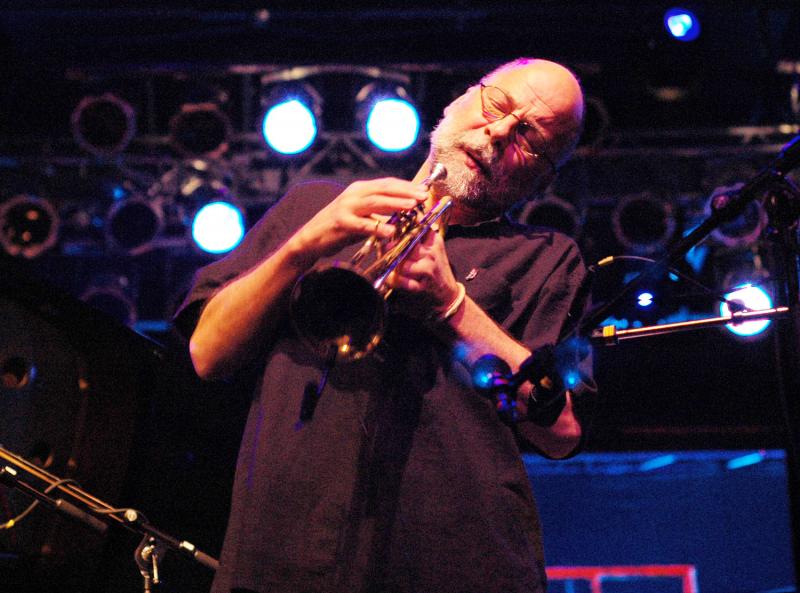
A brief introduction, at the conclusion of the 45-minute set, was in Finnish, but it was possible to glean a reference to Sound & Fury, the band to follow, as the trio launched into a relatively short improv that referenced some of the turbulent landscapes of the late Edward Vesala's best-known band, proving that dark beauty can still be found in the most disturbed places. If Kuára is one of this year's most stunning surprises, then the performance by Mikkonen, Ounaskari and Jørgensen will surely go down as one of the highlights of Tampere Jazz Happening 2010, and a clear signal that this is a trio that absolutely needs to continue working together.
Day 4: Sound & Fury
As much as there's a new scene building in Finnish jazz, with many of its artists performing during the four days of Tampere Jazz Happening 2010, there was a time when all thoughts of Finnish jazz turned to the music of drummer/composer Edward Vesala. While his early work was heavily weighted in free improvisation, participating on classic 1970s ECM albums such as saxophonist Jan Garbarek's Triptykon (1973) and trumpeters Tomasz Stańko's Balladyna (1976) and Kenny Wheeler's Around Six (1979), his own releases began to concentrate more on a marriage of form and freedom; music that often seemed to teeter on the brink with a kind of controlled chaos. When Vesala met with Iro Haarla, in the late 1970s, it was the beginning of a personal and professional marriage that lasted until his death, one where the pianist/harpist's classical training and ear for orchestration began to increasingly impact on the drummer's writing. It's no secret, in fact, that Haarla was an uncredited co-composer of much of Vesala's work from the early 1980s forward, contributing significantly to classic recordings like Lumi (1987) and Ode to the Death of Jazz (1989), the first recording by the drummer's aptly named group, Sound & Fury.

Nearly 11 years after Vesala's untimely death at the age of 54, many of the members of his group are back under the same name, with fresh interpretations of classic Vesala charts—credited, finally, to Haarla, who did not, however, appear with the group. Without Haarla's piano and harp, and the accordion of either Taito Vainio or Matti Riikonen, the complexion of the group, at its Sunday afternoon Tampere Jazz Happening performance, was understandably altered. Still, the spirit of the group was on stunning display in a 70-minute set that drew on tracks like "The Wedding of All Essential Parts," from 1992's Invisible Storm, where the marriage of contemporary classicism, meticulously executed, met unrelenting improvisational élan, in particular Pepa Päivinen's curved soprano solo, which seemed to build to climax after climax, driven by turbulent polyrhythms from bassist Sampo Lassila, and drummers/percussionists Ilmari Heikinheimo and Hannu Risku, all newer recruits and not members of the original Sound & Fury lineup.
The original members were, in fact, the frontline of Päivinen, saxophonists/flautists Jorma Taipo and Tane Kannisto, trumpeter Matti Riikonen (who blew a marvelously long and powerful solo, early in the set), and guitarist Jimi Sumen, who also engineered all of Sound & Fury's albums on ECM after Lumi. Sadly, Sumen has contracted MS in the last decade or so and now walks with a cane, requiring a second guitarist, Julius Heikkilä, to assume some of the charted parts. Still, Sumen took a few solos where it was clear his extreme notions of sound and, well, fury were still intact, elsewhere creating washes of distorted sound palming the body of his guitar and using his whammy bar to create swooping dives.
 Jimi Sumen
Jimi SumenA potent set, proving that the relevance of Vesala's (and Haarla's) music does, indeed, transcend time. It wasn't the last performance of the day, but it seemed like the perfect place to stop—ending, in a way, full circle, bringing the modern scene of younger artists like Mikko Innanen, Kalle Kalima and Kari Ikonen back to the music that, in many ways, is still its precedent. Ricky-Tick Big Band followed with an homage to the swing era of the 1930s and 1940s, while The Bad Ass Brass Band and DJ Levy closed the festival in style at Klubi, bringing together a disparate array of influences, all underscored by a definitive Finnish pulse. But with Sound & Fury, Tampere Jazz Happening 2010 ended on a particular high note by recalling the music that first put the country on the jazz map, and proving its continuing relevance long after it was first introduced.
Wrap-Up
And so, Tampere Jazz Happening 2010 ends, an occasion marked by a fertile combination of legacy and budding artists, and proof that the diverse Finnish scene is truly best represented at this festival; it may be small in scale, but it is big in import. With a worldwide reputation as the finest jazz festival in Finland, and with a true milestone coming in 2011—its 30th anniversary—it's a festival that will, no doubt, attract considerable attention when its line-up for 2011 is announced.

As the winter truly begins to set in—darkness at 4:30 in the afternoon and enough snow fallen to have whitened the roofs—it's also a reminder that the weather in Finland may be somewhat prohibitive outside, but inside, where it counts, at Klubi, Telakka and Pakkahuone—and thanks to the people running the festival, who did everything possible to make its guests feel welcome—there's still plenty of warmth to be found.
Visit Juhani Aaltonen, Kalle Kalima , Plop, Kolhoz, Markku Ounaskari, Samuli Mikkonen and Tampere Jazz Happening on the web.
Photo Credits
All Photos: John Kelman
Day 1 | Day 2 | Days 3-4
Tags
PREVIOUS / NEXT
Support All About Jazz
 All About Jazz has been a pillar of jazz since 1995, championing it as an art form and, more importantly, supporting the musicians who make it. Our enduring commitment has made "AAJ" one of the most culturally important websites of its kind, read by hundreds of thousands of fans, musicians and industry figures every month.
All About Jazz has been a pillar of jazz since 1995, championing it as an art form and, more importantly, supporting the musicians who make it. Our enduring commitment has made "AAJ" one of the most culturally important websites of its kind, read by hundreds of thousands of fans, musicians and industry figures every month.


